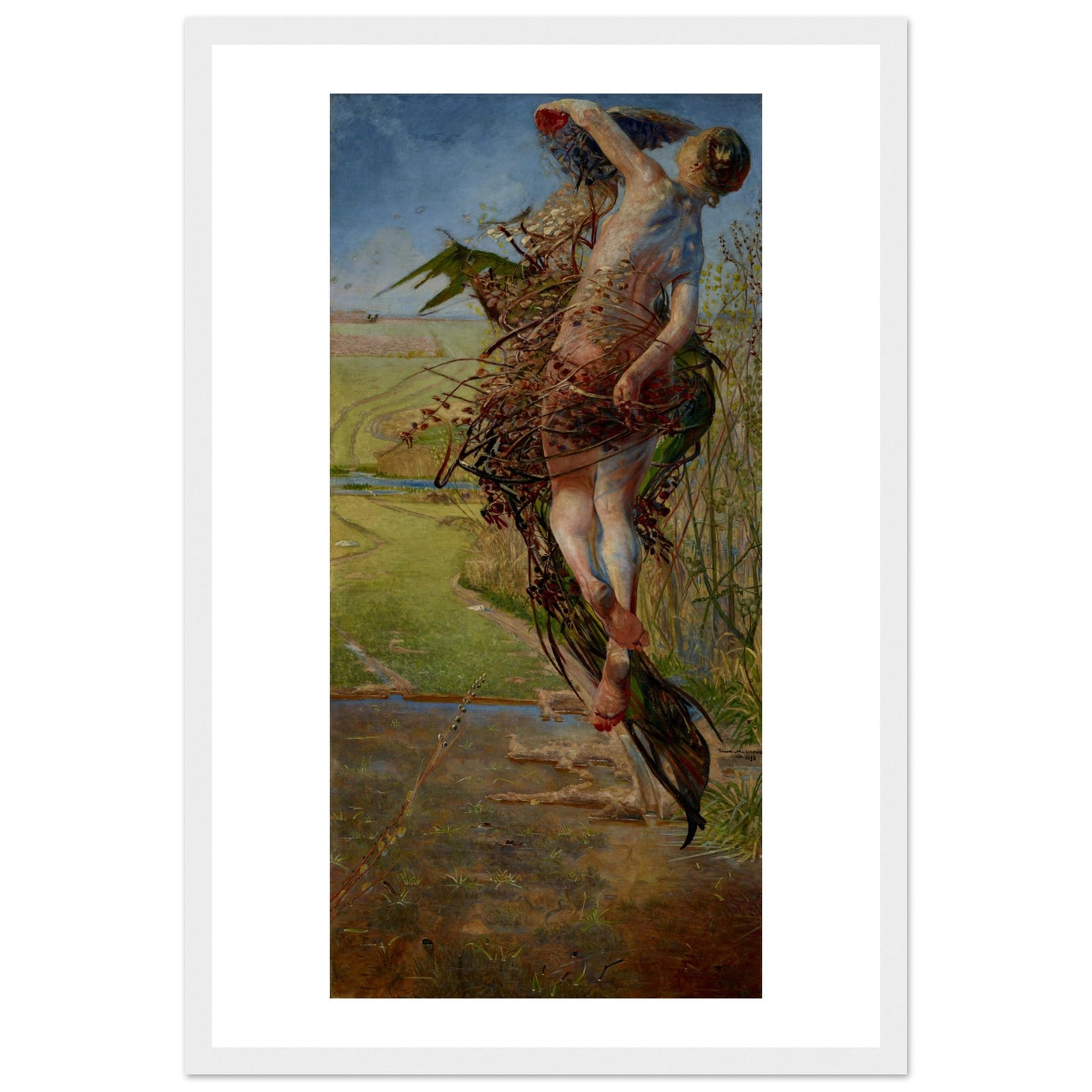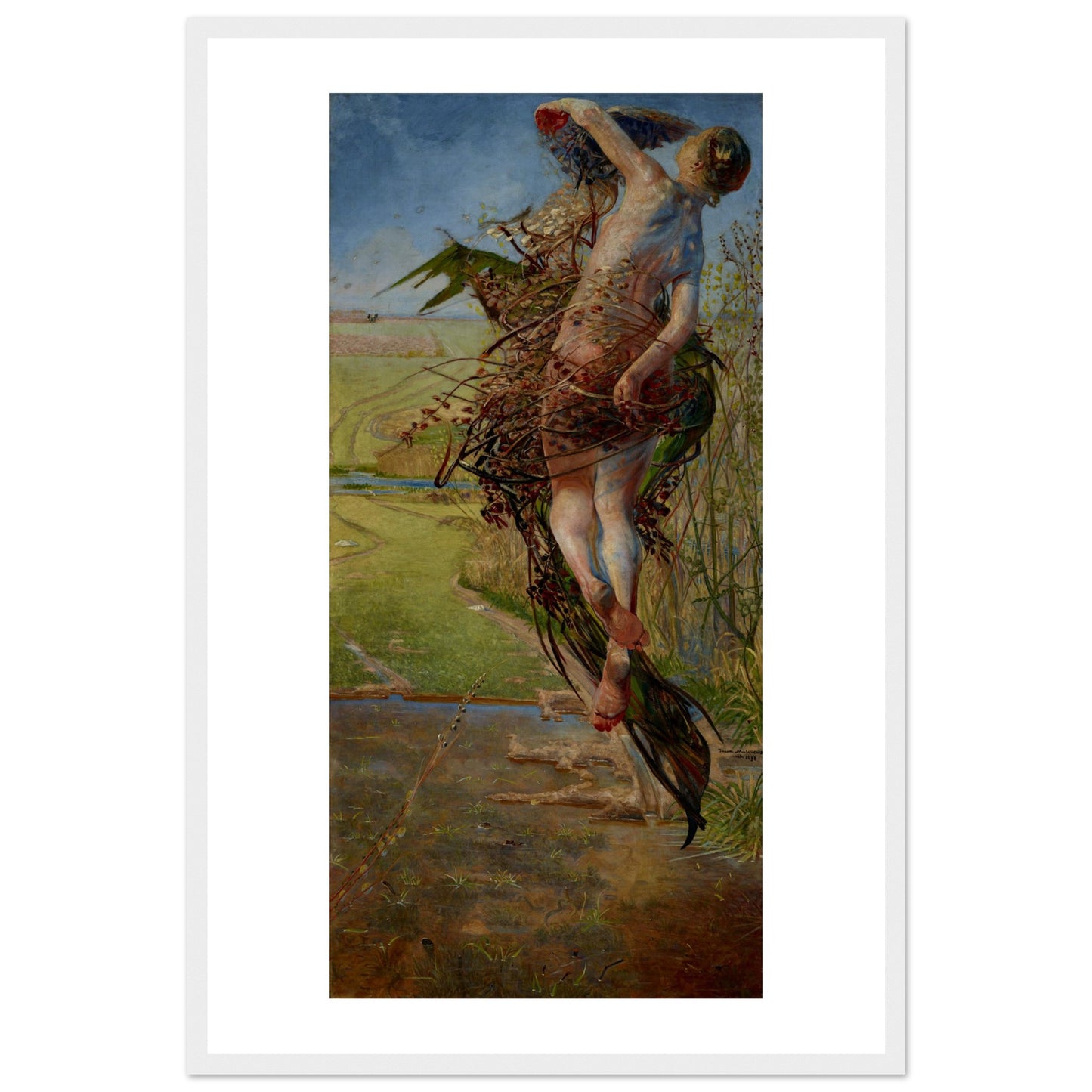Spring (1898)
Spring (1898)
Couldn't load pickup availability
Share
Most will glance at "Spring (1898)" and see only its surface—a pastoral vision, a touch of mythology, a fleeting moment of beauty. But those who truly understand Jacek Malczewski’s genius recognize something deeper. This isn’t just a depiction of spring; it’s a carefully layered allegory, a moment of renewal shadowed by something more complex.
Malczewski, a master of Polish Symbolism, was never one to paint simple scenes. "Spring" is alive with duality—youth and age, joy and melancholy, hope and the weight of history. The figures, draped in flowing garments, seem to exist somewhere between dream and reality, their gazes caught in a knowing stillness. Every detail, from the soft pastels to the subtle tension in their expressions, invites a second look.
Step closer, and the scene shifts. The lush landscape hums with life, yet the figures remain strangely distant, their serenity almost too poised. Is this a celebration of spring’s arrival, or a moment of quiet reflection on the passage of time? Malczewski doesn’t give easy answers—only those who look beyond the obvious will catch the whispers of meaning in his brushstrokes.
If you know, you know. And now, that quiet understanding can be part of your space.














Fast, Trackable Delivery. Wherever You Are 🌍
Made & shipped from 9 global print hubs
Our smart routing system picks the closest production centre to you for speed and sustainability in UK, US, Canada, France, Germany, Netherlands, Norway, Spain, Sweden.
Quick-turn dispatch
Prints leave the studio in 1-3 business days, then typically arrive in:
UK: 3-4 days | US: 4-6 days
Canada: 5-6 days | EU: 3-5 days
Rest of world: ≈ 14 business days
Trusted carriers only
Royal Mail, DHL, UPS, FedEx, Parcelforce, PostNL, Asendia, EVRi, Posten & more—all fully trackable.



